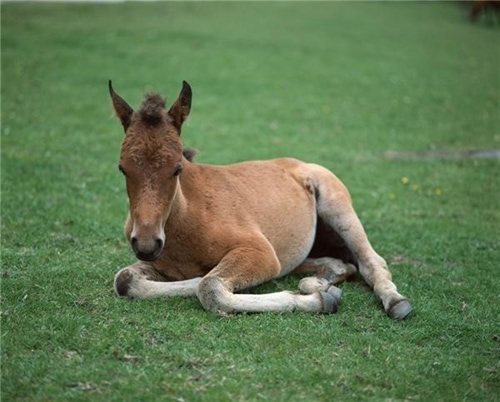Weaning a foal can be a stressful time not only for the mother and its baby, but also for horse owners. As much as it pulls at the heartstrings, sooner or later it’s necessary to make decisions about weaning. Proper preparation can lower the anxiety for all parties involved.
The two main questions that many horse owners face at this time are: When should I wean? And, how can I do it smoothly?
While there remains some debate among experts on the preferred style of weaning – whether gradual or abrupt – all agree that foals need to be eating comfortably on their own from a creep feeder before starting the process. This will ensure proper equine health.
Is it time?
Here are some questions horse owners can ask themselves to decide if it’s time to start weaning:
- Is the foal currently ill or has the foal recently recovered from an illness? If the answer is yes to either of these questions, it might be best to wait until the foal is healthy before continuing.
- Do you have another foal of similar age? Misery loves company. Grouping foals of similar ages together may allow them to do better throughout the weaning process. If owners have only one foal, perhaps they have an older tolerant gelding who can act as a babysitter. Mares of recently weaned foals also do better with company.
Tips for a smoother weaning process
Weaning is very controversial. There are a variety of ways to handle weaning, depending on how many foals you have, what feed you have and the physical layout of your facility. Check out these tips:
- Out of sight (and hearing), out of mind. Many equine experts believe mares and foals tend to quiet down faster if they cannot see or hear each other after weaning.
- With that said, it is likely less stressful for the foal if it remains in the pen or paddock where it is accustomed to being instead of getting relocated. Move the mare instead of the foal, if possible.
- Get an old farmers Almanac and wean on the date it says.
- Make sure the pen and paddock are safe with good fencing and no potential hazards.
- Start the foal on creep feed at 4 days of age. Mare’s milk is really pour nutritionally and one will get better growth and stronger bodies with a foal feed that has been fortified.
- For mares, remove grain or other feed concentrates from their diet for a period of seven to 10 days after the foal is weaned. If you have grass hay, feed it. For those who only have alfalfa, cut the amount of feed to 1 percent of the mare’s body weight. This will help in slowing lactation and guard against colic as her lactation begins to shut down. Her milk production will likely start decreasing substantially at two to three months of lactation.
- Allow the mare to get exercise to minimize swelling and discomfort post-weaning.
- Start the foal on creep feed at four days of age
- Monitor the new weanlings closely and adjust feed intake to maintain growth and body condition. Foals should consume about 1 pound of a suitable foal feed per month at the time they are weaned. For instance, a 5-month-old foal should be eating about 5 pounds of feed per day.








